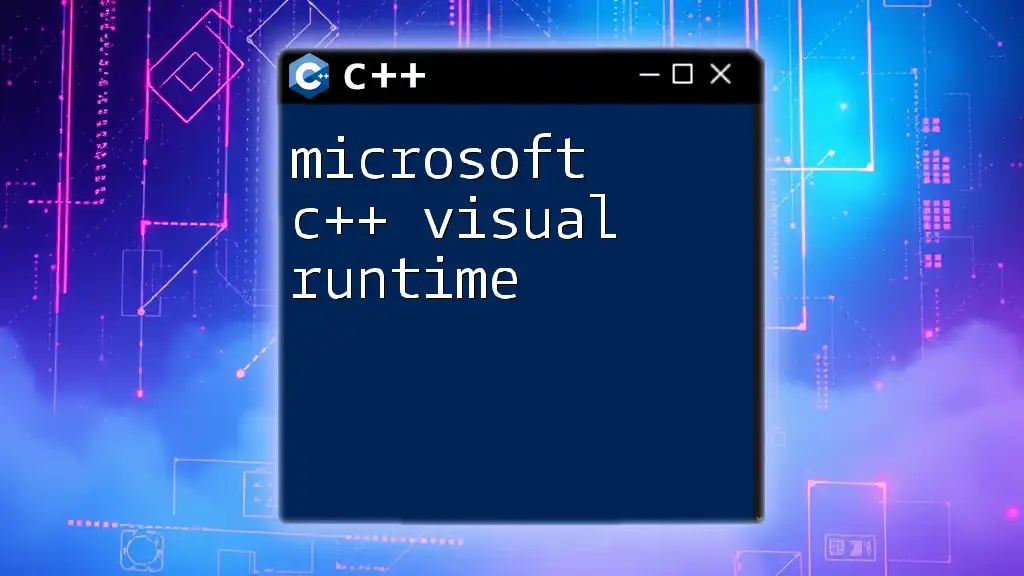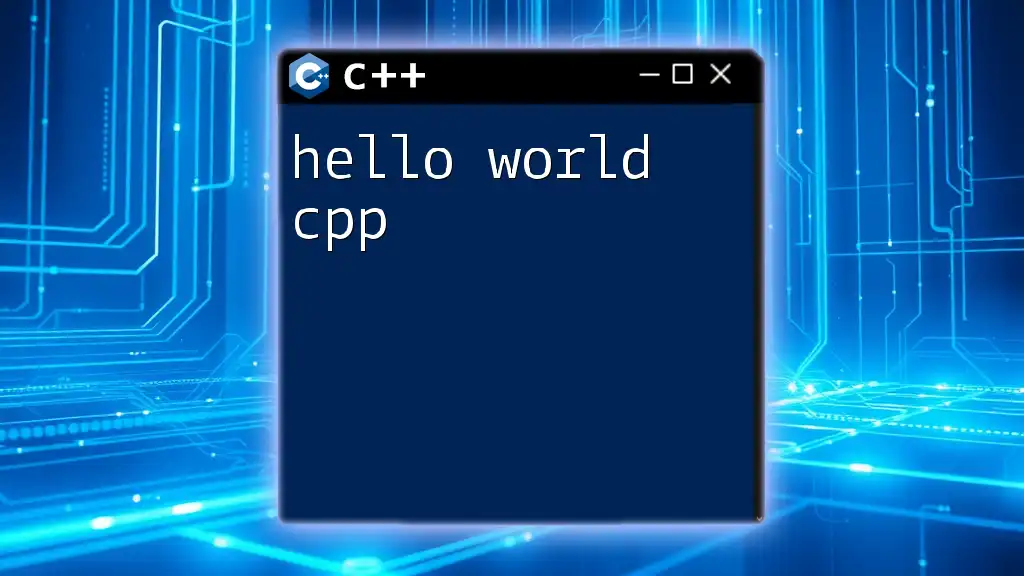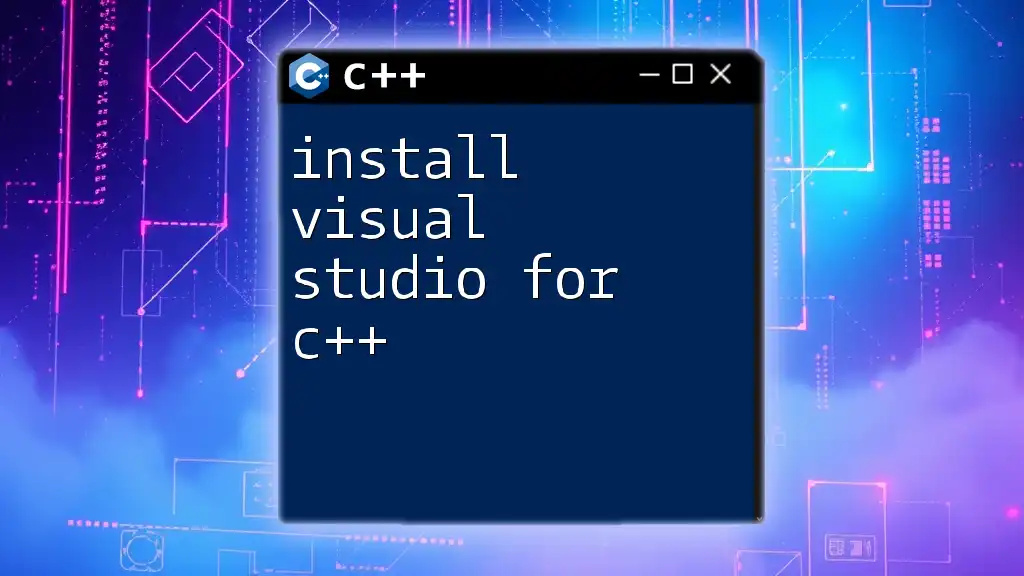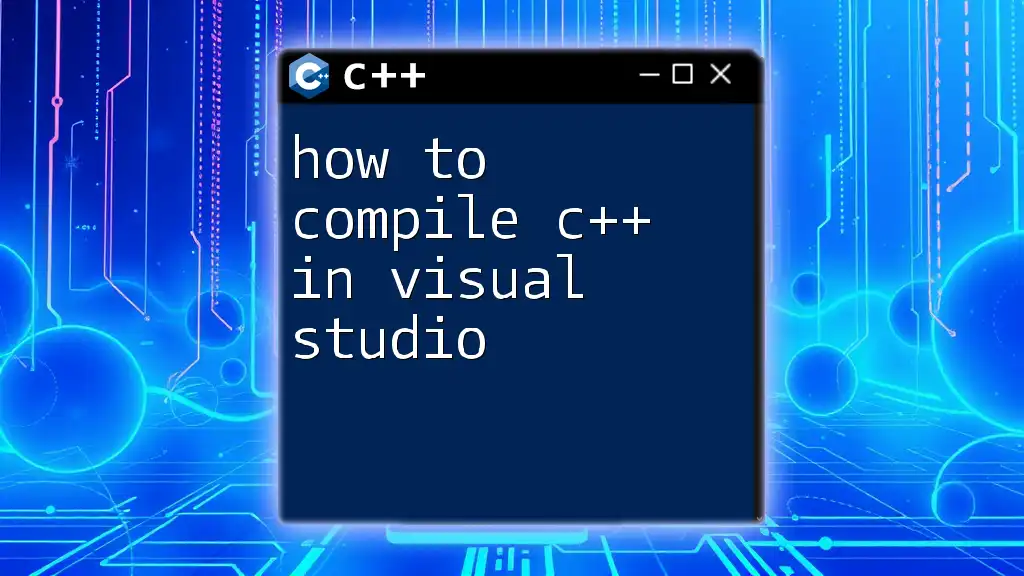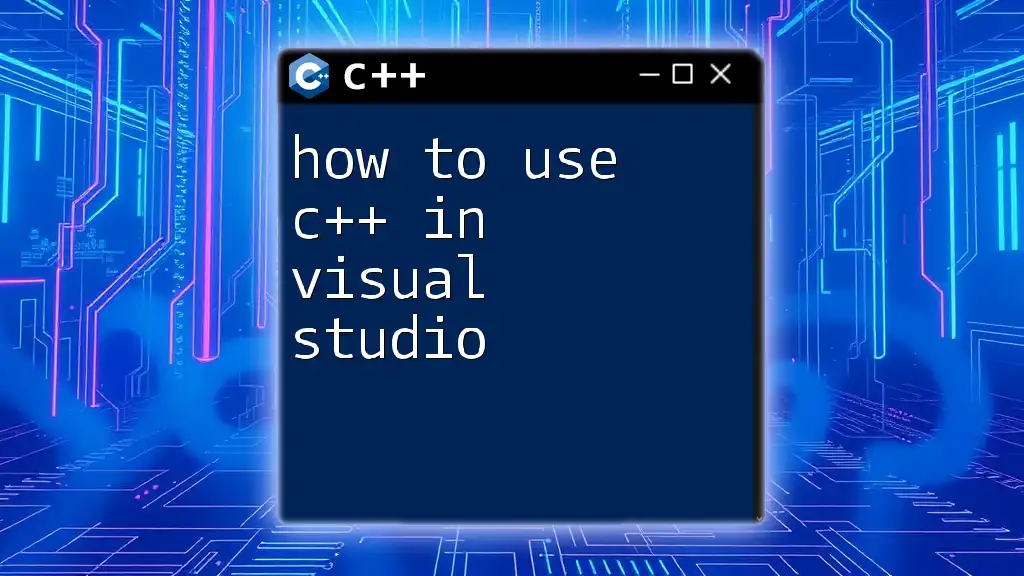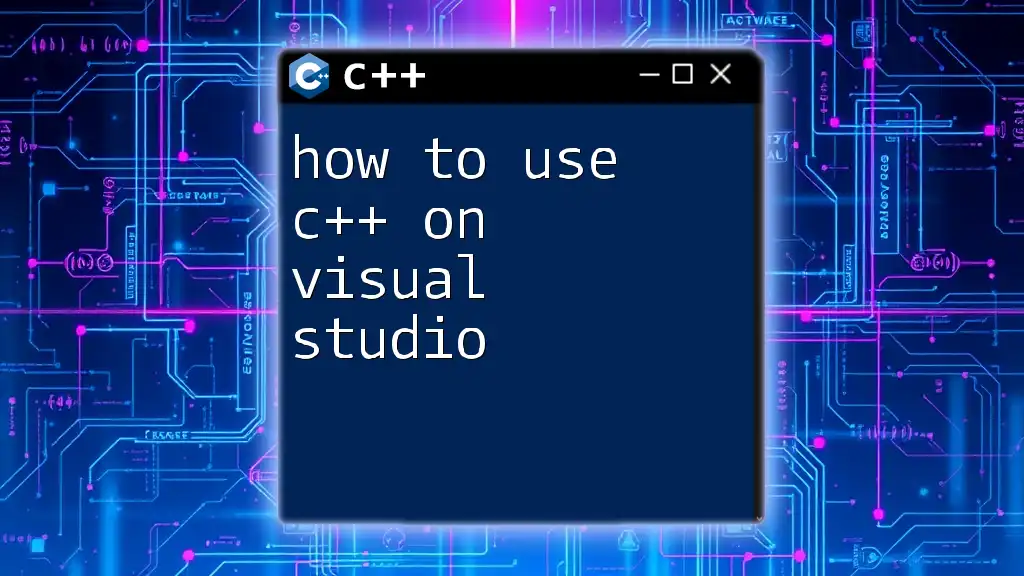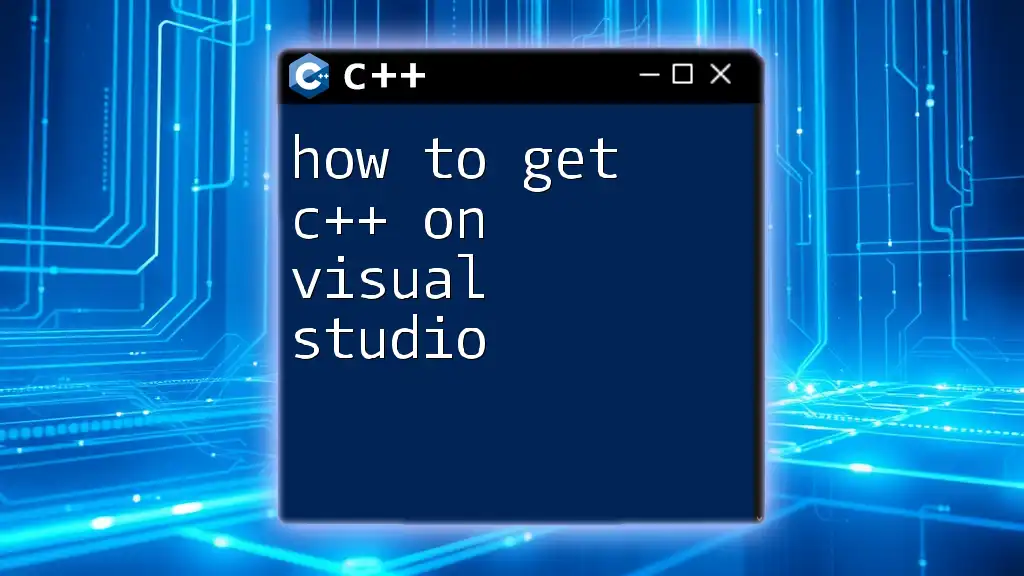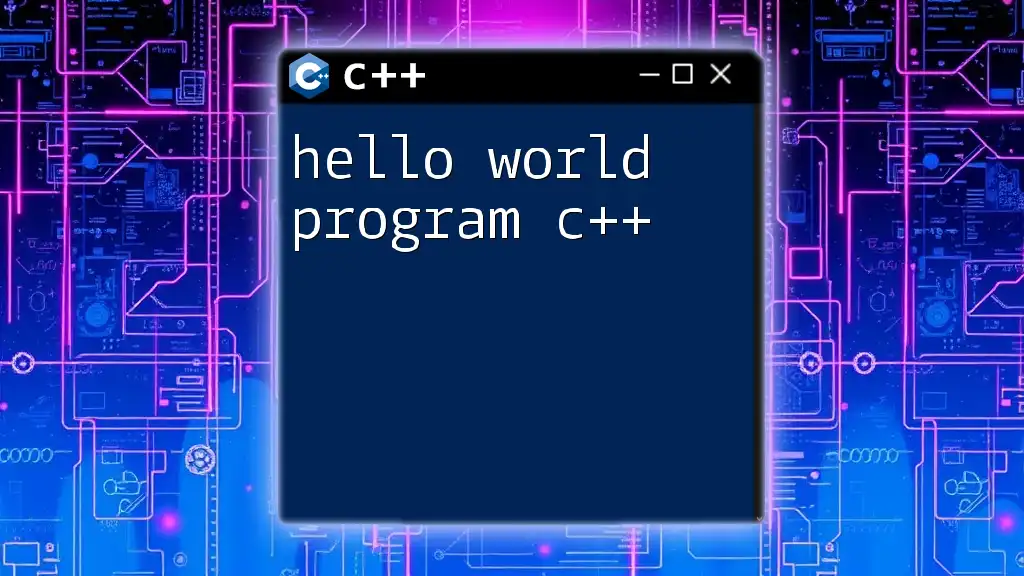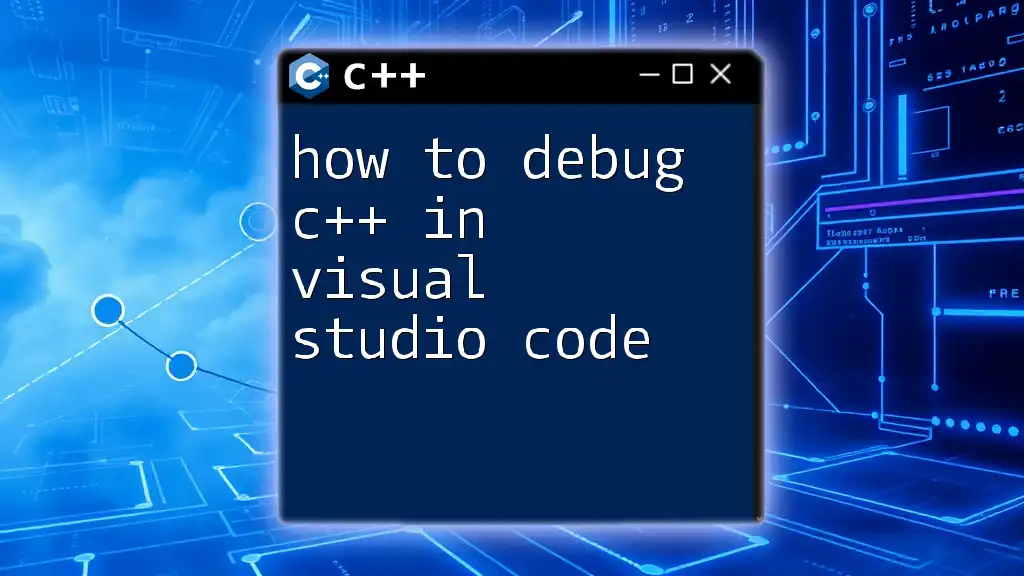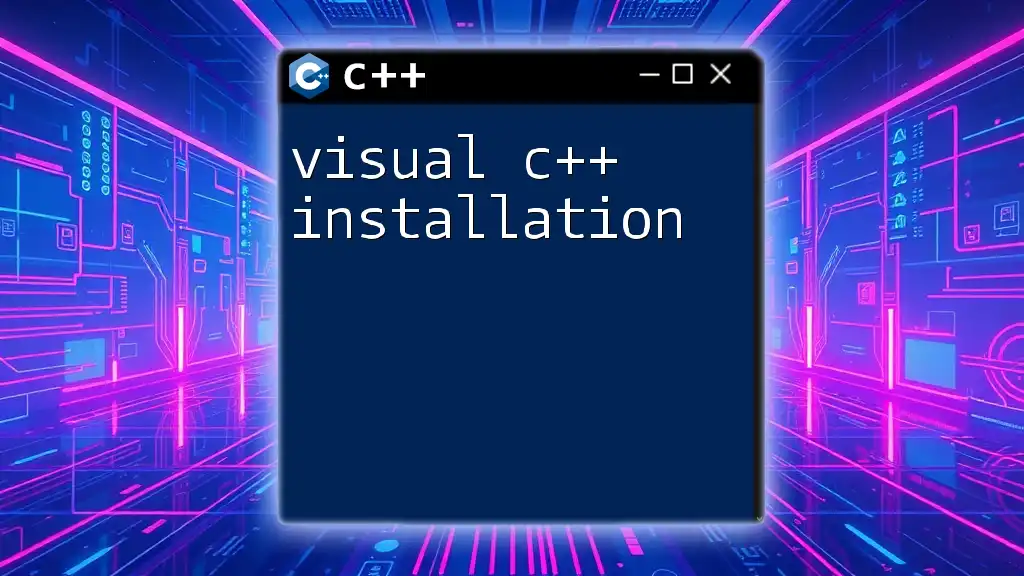In this guide, we will create a simple "Hello, World!" program in C++ using Visual Studio to demonstrate how to write and execute your first C++ command.
Here’s the code snippet:
#include <iostream>
int main() {
std::cout << "Hello, World!" << std::endl;
return 0;
}
Installing Visual Studio
Choosing the Right Version
To get started with C++, you need to choose an appropriate version of Visual Studio. The Community edition is free and provides all the necessary tools for small projects and personal use. If you're working in a larger organization or on a commercial product, you may consider the Professional or Enterprise editions.
System Requirements
Before proceeding with installation, ensure your system meets the necessary requirements. Generally, you'll need a compatible version of Windows (Windows 10 or later is recommended), sufficient RAM (at least 4 GB), and adequate disk space (ideally 20 GB).
Installation Steps
-
Download Visual Studio: Go to the official Visual Studio website and download the installer.
-
Select C++ Workload during Installation: During the installation process, you will be presented with different workloads. You should select the "Desktop development with C++" workload to get all the essential tools to develop C++ applications.
Once installation is complete, you’re ready to write your first C++ program!
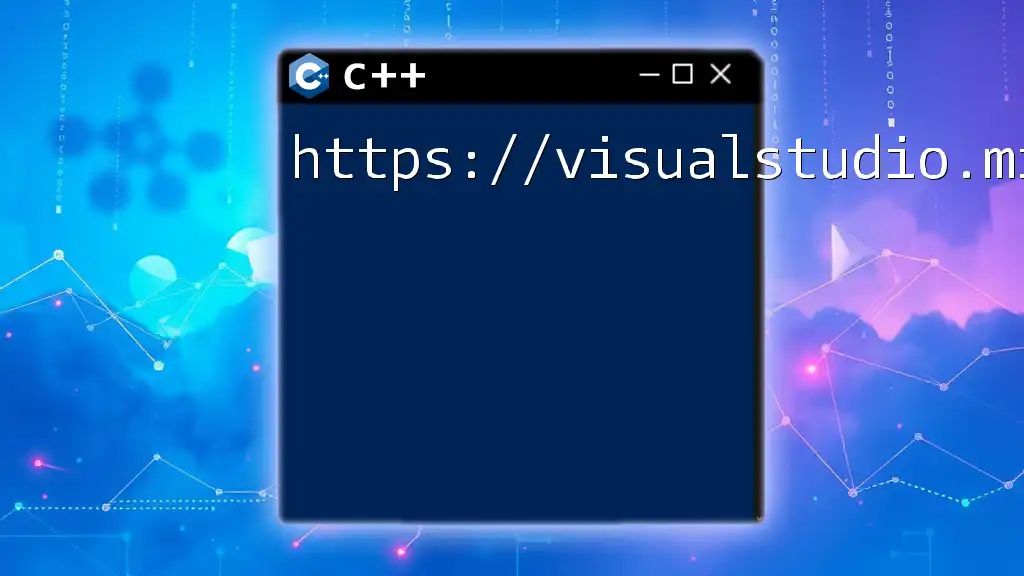
Setting Up Your First C++ Project
Launching Visual Studio
When you first open Visual Studio, you’ll encounter a start screen with several options. From here, you can create a new project.
Creating a New Project
-
Navigating to Create Project: On the start screen, click on "Create a new project."
-
Selecting C++ Project Template: In the project template selection window, filter by C++. Choose Console Application or Empty Project based on your preference.
-
Naming Your Project: After selecting the template, give your project a meaningful name like "HelloWorld."
Setting Project Properties
Before you begin coding, you might want to check the project properties. Right-click on your project in the Solution Explorer and select Properties. Here, you can define settings like output type, additional include directories, and more.
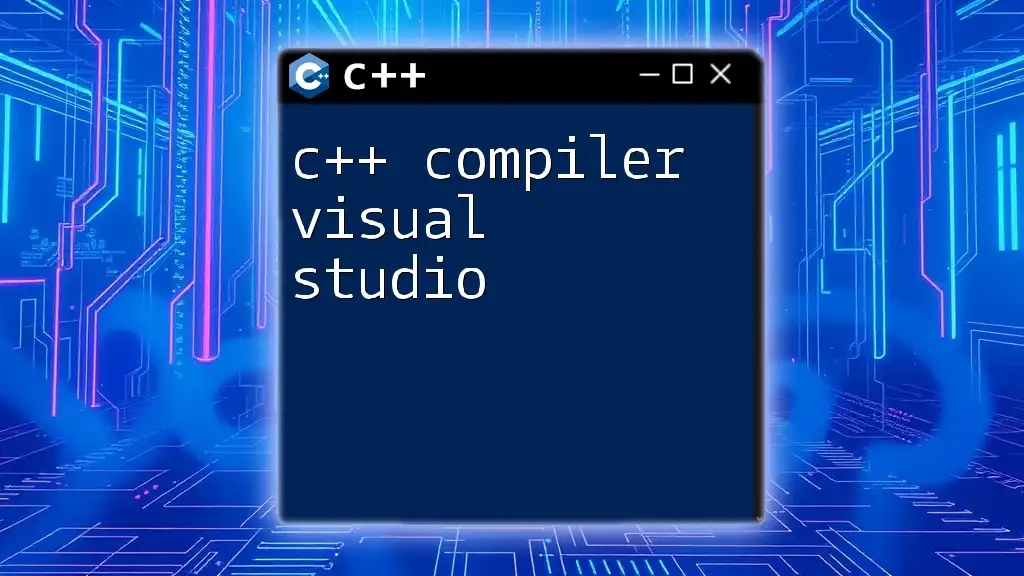
Writing Your First C++ Program
Understanding the Structure of a C++ Program
A C++ program consists of various elements, including headers, functions, variables, and control structures. Understanding how these components work together is crucial for writing effective C++ code.
Code Snippet: Hello World Program
Now, let's write the classic Hello World program. This is often the first program that beginners learn since it tests the ability to compile and run code successfully.
#include <iostream>
int main() {
std::cout << "Hello, World!" << std::endl;
return 0;
}
Explanation of Each Part
-
`#include <iostream>`: This line tells the compiler to include the standard input-output stream library, which is necessary for using `std::cout`.
-
`int main()`: This declares the main function, which serves as the entry point of every C++ program. The program execution begins here.
-
`std::cout`: This is an object of the output stream class. It is used to output data to the standard output, usually the console.
-
`<< "Hello, World!"`: This operator (`<<`) directs the string "Hello, World!" to the output stream.
-
`std::endl`: This manipulator inserts a newline and flushes the output buffer, ensuring that your message appears before the program ends.
-
`return 0;`: This statement signals the successful termination of the program.
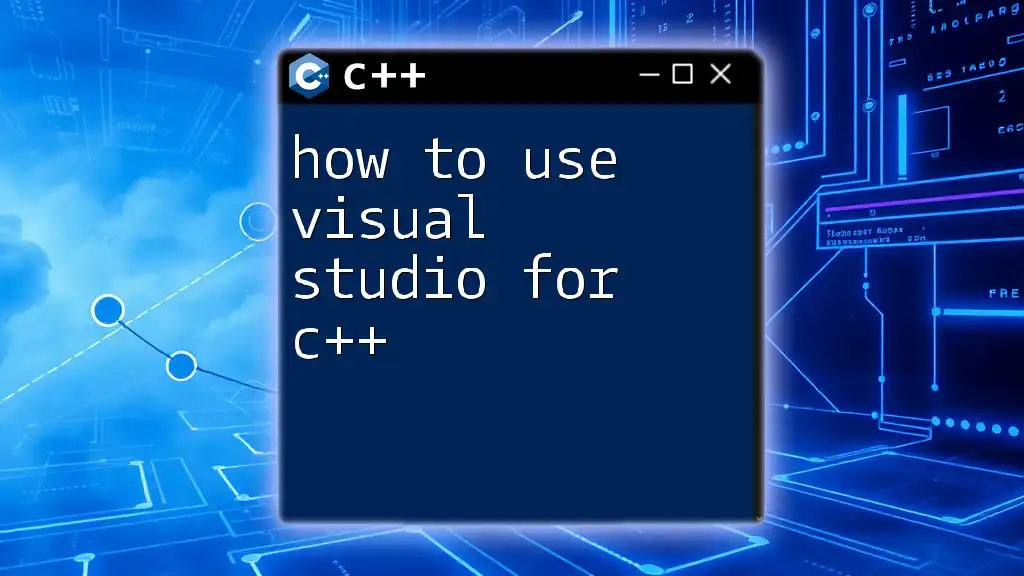
Compiling and Running Your Program
Compiling Your Code
In Visual Studio, compiling your code converts it from source code to machine code. You can do this by navigating to the Build menu and selecting Build Solution. This process checks your code for errors and generates an executable file.
Running the Program
After compiling successfully, it’s time to run the program. You have two main options:
-
Start Debugging: This will build and run your program in debug mode, allowing you to inspect performance.
-
Start Without Debugging: This runs the program without debugging, which is faster and sufficient to see the output.
Once executed, you should see "Hello, World!" displayed on the console.
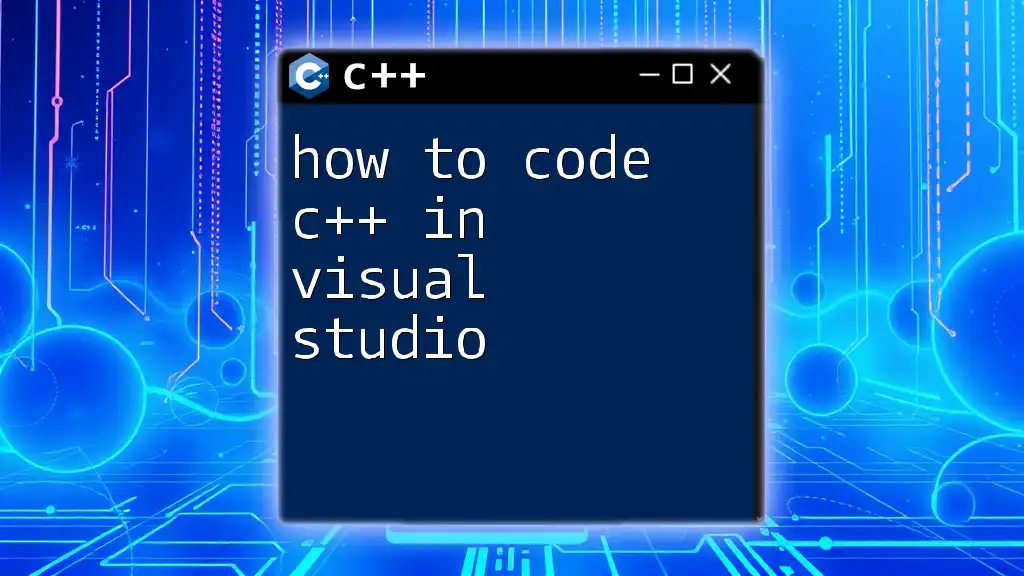
Troubleshooting Common Issues
Compilation Errors
If you encounter compilation errors, they might be due to syntax issues or missing includes. Pay attention to the error messages in the Error List panel, which provide hints on what needs fixing.
Runtime Errors
Common runtime issues could arise from logical errors or uninitialized variables. If your application crashes or behaves unexpectedly, consider carefully checking your code's logic.
Using Visual Studio Debugger
One of the powerful features of Visual Studio is its debugger. You can set breakpoints by clicking on the left margin next to the code line. This allows you to pause execution and inspect variables and the call stack at specific points, making debugging an easier task.
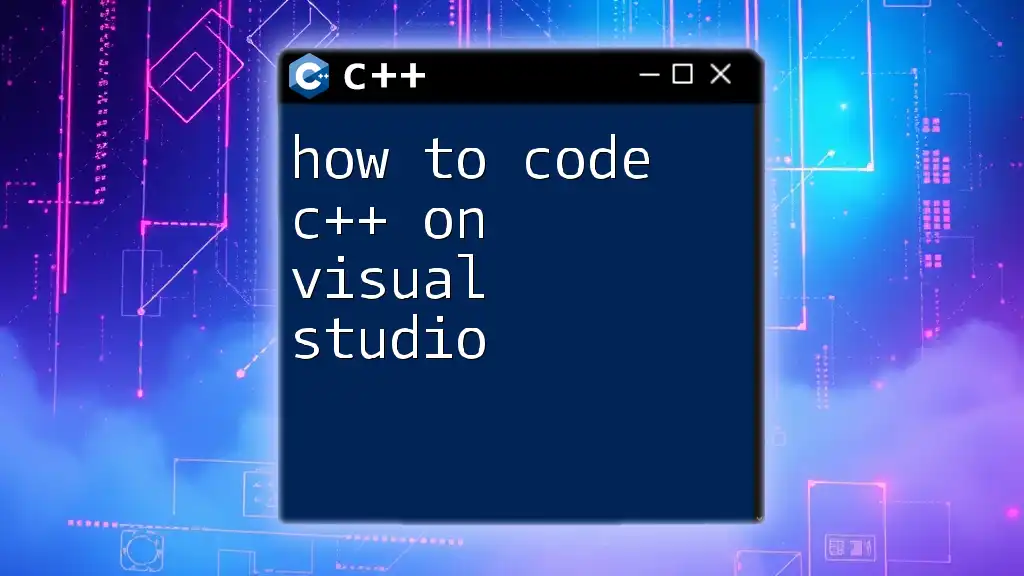
Conclusion
Congratulations on successfully writing and running your first Hello World program in C++ using Visual Studio! This foundational exercise sets the stage for your exploration into more complex C++ concepts and structures. As you progress, consider diving into classes, functions, and data handling, which are integral to effectively utilizing C++ for software development.
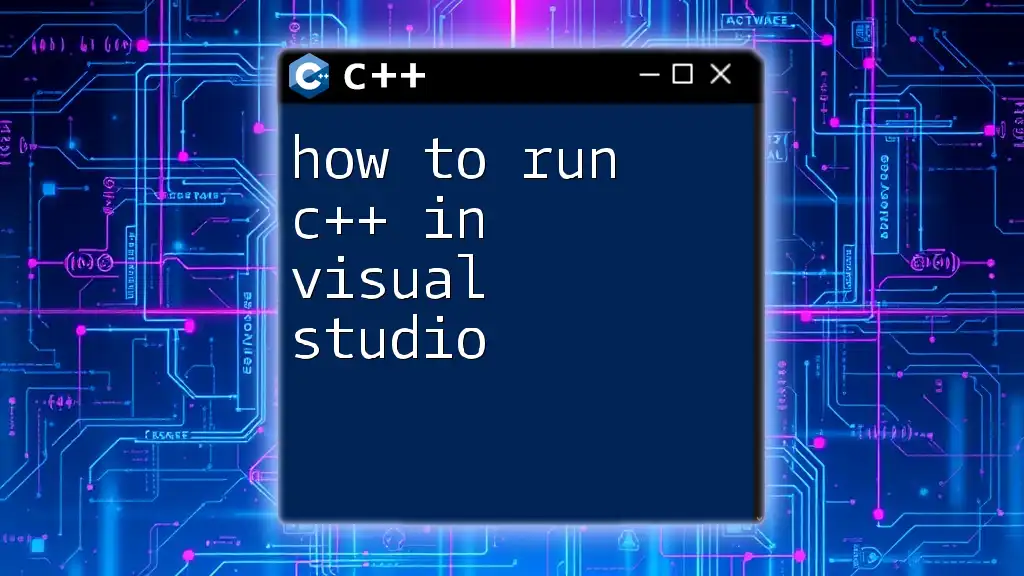
Additional Resources
- Useful Links: Check out the [official Visual Studio documentation](https://docs.microsoft.com/en-us/visualstudio/?view=vs-2022) for in-depth guides on features and functions. Join online communities such as [Stack Overflow](https://stackoverflow.com) or Reddit's r/cpp to engage with other C++ learners and professionals. For comprehensive learning, consider investing time in respected C++ tutorials or books to expand your knowledge base.







